Major Female Figures in Islamic Jurisprudence: Part II - Tābiʿiyyāt
In this article, i.e., part two of Major Female Figures in Islamic Jurisprudence, prominent jurists from tābiʿiyyāt are mentioned with brief information on their contributions.
ʿAmra bint ʿAbduraḥmān
ʿAmra bint ʿAbduraḥmān al-Najjāriyyah bin Sa’d bin Zurārat bin Adas al- Ansariyya[i] was amongst the most outstanding female jurists from the generation that came after the period of the companions of the Prophet (ﷺ). She was a scholar, jurist and specialist in Prophetic traditions (ḥadīth). Her father and grandfather were considered as forbearers among ṣaḥābah.[ii] She came forward to occupy such a great position of the academic arena of Islamic jurisprudence only from adequate care that she received from Umm al-Muʾminīn ʿĀyisha and her great closeness with Prophetic family.
Although ʿAmra got a great deal of excellent nurturing from Umm al-Muʾminīn ʿĀyisha, she made a lot of painstaking efforts for acquiring knowledge. As a result of her contemporaries’ recognition and respect, ʿAmra’s deeds were adopted as legal evidence by later jurists. ʿAmra’s involvement in economic transaction is an excellent example of her exercise of juridical authority[iii]. Prominent jurist Sufyān bin ʿUyaynah reported, “They used to seek advice from her in issues concerning sales and other dealings.”[iv] Sufyān bin ʿUyaynah’s teacher Yaḥya bin Saʿeed had recurrently witnessed people discuss with ʿAmra on such legal matters. In al-muwaṭṭa, Mālik made use of ʿAmra’s actions to establish a legal precedent narration.[v]
Ibnu Ḥibbān says: she was the most knowledgeable person about ḥadīth of Umm al-Muʾminīn ʿĀyisha. Imām al-Dhahābi says: she was a scholar, jurisprudent and reliable in ḥadīth.[vi] ʿUmar bin Abdul Azīz says: no one remained in the planet well-informed about ʿĀyisha’s Ḥadīth than ʿAmra and he used to converse with her regularly.[vii]
Ummu Dadrā’ al-Ṣughrā
Ḥujayma al-Asabiyya was one of the great jurisprudents from tābʿiyyah generation. She was the second wife of Abu Dardā’, whom he married after the death of the Prophet. From her childhood, she exhibited an unprecedented interest in learning the Quran and other Islamic studies disciplines that led her to be a well-versed personality in legal studies and tafsīr.[viii]
She grew up to become a jurist, Islamic scholar, and teacher of ḥadīth and Fiqh and eventually began lecturing both men and women in the Damascus mosque. Yaḥyā binYaḥyā al-kāsāni[ix] says: the Umayyad caliph Abdul Mālik bin Marwān used to come to Damascus Masjid to attend Ḥujayma’s scholarly lectures. Likewise, she arranged special lectures for women in Jamiʿa Damascus and provided special education for children. Makḥūl says: Ummu Dardā’ was a notable figure with good command in Islamic jurisprudence. Ibn kathīr says about her: she is a tābiʿiyath, scholar and jurist.
Ḥafsa bint Sīrīn
Ḥafsa bint Sīrīn, sister of Muḥammad bin Sīrīn (who was famous for his skill in interpreting dreams), was a celebrated female jurist in Baṣara.[x] She did memorize the entire Qurʿān.[xi] when she was of 15th of her age.[xii] She has been celebrated as one of the “pioneers in the history of female asceticism in the Island”.
She was the disciple of Umm al-Muʾminīn ʿĀyisha (r), and famous Ṣaḥābi Anas bin Mālik, servant of Prophet (ﷺ.) and she reported ḥadīth from both of them.[xiii] Thus she turned as a well-experienced teacher for innumerable scholars, including ʿAyyūb al-Sakhtāni, Qatādat bin Da’math al-Sadūsi and Hishām bin Hasan. She is known as a reliable source (al-thiqat) in ḥadīth and reported countless Hadith related to Islamic legal matters like zakāt and the process of funeral activities. Additionally, most of her narration was about issues connected with the bathing of the dead body.
Daughter of Zayd bin Thābit
As Zayd bin Thābit served as the private writer of Prophet (ﷺ.) and built a close relationship with the Prophet (ﷺ), his daughter demonstrated extraordinary and remarkable performance in the Islamic legal tradition. Imām Bukhārī quoted her in chapter name “Kitab ul-Hayḍ” in his saḥīḥ, and Ibnu Ḥajar says: Imām Mālik appended her name in his “al-Muwaṭṭah” narrating about ʿAbd Allāh bin Abī Bakr.
She was a vigilant scholar in Islamic legal issues. She thrived in a proper scholarly surrounding in her own home thanks to her father’s[xiv] close relationship with the messenger of Allah.
Also Read: Man and Woman Between Islamic and Liberal Worldviews
Nafīsah bint al-Hasan
Nafīsah bint al-Hasan, the great-granddaughter of the Prophet Muhammad (ﷺ.), was born in Makkah and spent her later life in Cairo, where a mosque now bears her name. She was raised with a broad Islamic religious background and gained knowledge from great teachers, memorizing the Qur’an and learning ḥadīth and Islamic jurisprudence in her teenage.[xv]
Bint al-Hasan was renowned for her excessive devotion to worship, having reportedly fasted during the day, prayed all night, and performed Ḥajj around thirty times in her life. Her immense dedication for knowledge offered her the title ‘Nafīsath al-Ilm’ and consequently, she taught two of the most noticeable scholars of the Muslim world, AbuʿAbd Allāh Muḥammad Idris al-Shāfiʿī and Aḥmad bin Ḥanbal, whose lessons prompted the Shāfiʿī school of jurisprudence and the Ḥanbalī school of jurisprudence respectively. Additionally, Imām Shafiʿī was a frequent visitor of her for acquiring Islamic legal knowledge. Afterwards, when Nafīsah passed away, Imām Shafiʿī separately led the funeral prayer as she advised him to do so.
ʿĀyisha bint Ṭalhath al-Taymiyya
She was known as Ummu ʿImran. Her mother was Ummu Kulthūm bint Abu Bakr, sister of ʿĀyisha. She was reliable (al-thiqth) in Hadith narrated by her and the famous Tabiʿiyyah of Madina. She had reported Ḥadīth from her aunty ʿĀyisha. She was reported by her son Ṭalhat binʿAbdullāh bin Abdul-Rahman and Habeeb binʿAmr and son of her brother Ṭalhat bin Yaḥya bin Ṭalha.[xvi] Moreover, due to her constant association with ʿĀyisha, she became a great source of Islamic legal studies and became part of many occurrences connected with Fiqh.[xvii] She reported some Ḥadīths connected with ʿIbādath, including fasting and five-time prayers.
Conclusion
The first century of Islam was the glorious period of female figures in jurisprudents also who played significant roles in Islamic legal studies. Even though there was the unavailability of a single text written on Fiqh by women, this period witnessed the emergence of numerous faqīhath. On the way of their successors, tābiʿiyyat also exhibited their potential in the same area, and they propelled the legal cognizance of their time.
In the next article, we will discuss the prominent female jurists in the medieval period.
Endnotes
[i] Shamsudeen Muḥammad Bin Aḥmad Bin ʿ Uthman al-Dhahābi,Tārīkh al Islam va Wafayat al-Mashāʿir,(Beirut,Dārul Kitāb al-Arabi, 1987) 443.
[ii] Al Imām Shamsudīn al-Dahabī, Siyaru Aʿlāmi al-Nubalā’, V:4. P:507.
[iii] Mona f. Hasan, Relations, Narrations and Judgement: The scholarly Network and Contribution of an Early Female Muslim Jurist, (Islamic Law and Society, 2015) Vol: 22 P: 327
[iv] Aḥmad bin Ḥanbal, Kitāb al-ʿIlal, V:2, P:66.
[v] Mālik, al-Muwaṭṭa,vol 2,p622.
[vi] Muḥammad Khayr Ramaḍān Yūsuf, Faqīhatun ʿĀlimathun, (Daru Thuwaiq li Nashri Val Tawzīʿ),P:47
[vii]Faqīhathu ʿĀlimathum, P:47
[viii] Exegesis of Quran
[ix] Siyaru Aʿlāmi al-Nubalā’, Vol 4,P277.
[x] Al Ṣafdi, Al wāfi Bil Wafayāt, Vol4, P305.
[xi] Ilyās Dardūr,Tārīkhul FiqḧAl Islāmi, Vol 1, P 329.
[xii] Yūsuf Bin Taghri Bardi Bin ʿAbdullāh Al Ẓāhiri Al Ḥanafi, al Nujūm Al Ẓāḧirat Fī Mulūki Misr Va Qāhirāth,(Egypt, Ministry of Culture and Social Welfare, Dārul Kutub), Vol;1, P:275.
[xiii] Shamsudīn Muḥammad Bin Aḥmad Bin Uthmān Al Dhahābi,Thārīkhul Islam wa Wafayāthul Mashāhīr wa A’lam,(Beirut, Dārul Kitāb al-Arabi1987),Vol:7,P:64.
[xiv] Muḥammad bin Ismāʿīl bin Ibrāhīm al-Bukahri, Al Jāmi’ a- Shih known as Bukhari,(Cairo, dar al-shuab,1987)vol:1,P:87.
[xv] Zayd bin Thabit al-Khazraji al-Ansariyy was of the bosom companions of the Prophet (s.a.w.), and he met Firstly the messenger of Allah while he was in eleven of his age, when the Prophet advanced towards Medina. He was the supreme authority of Fatwa and practised as Qāḍi of there. Predominantly, he used to write the Prophet's revelation and registered his among those who codified the Holy Quran. Due to his in-depth and immeasurable knowledge, most of renowned Ṣaḥābā were keeping a good contact with him
[xvi] ʾAbūl Fida’ Ismāʿīl Bin Ibrāḧīm bin Kathīr Al-Qurashi Al-Dimishkī, Al Bidaya wal Nihāth,(Daru Iḥyau Turathil Arabi,1988),V: 6,P: 225.
[xvii] Ilyas Dardūr,Tarīkhul Fiqḧal Islāmi, V:1, P:330.
(Sayyed Mashur Hudawi is a Lecturer at the Quran Department, Straightpath International School)
Disclaimer
The views expressed in this article are the author’s own and do not necessarily mirror Islamonweb’s editorial stance.




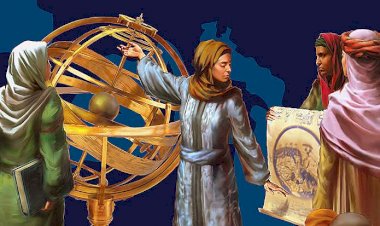

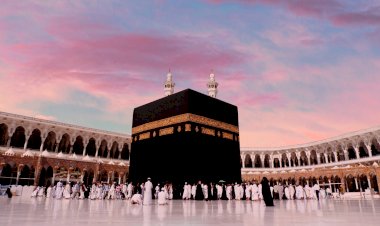
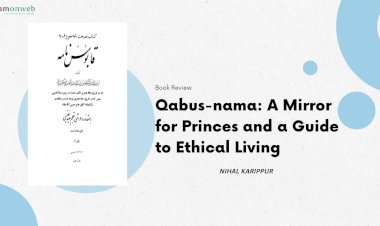
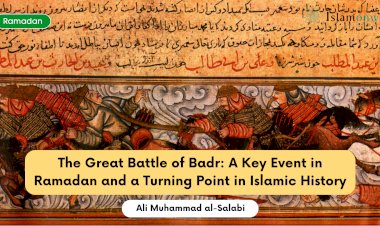
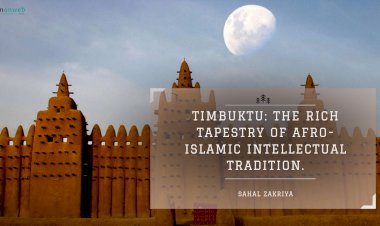














Leave A Comment